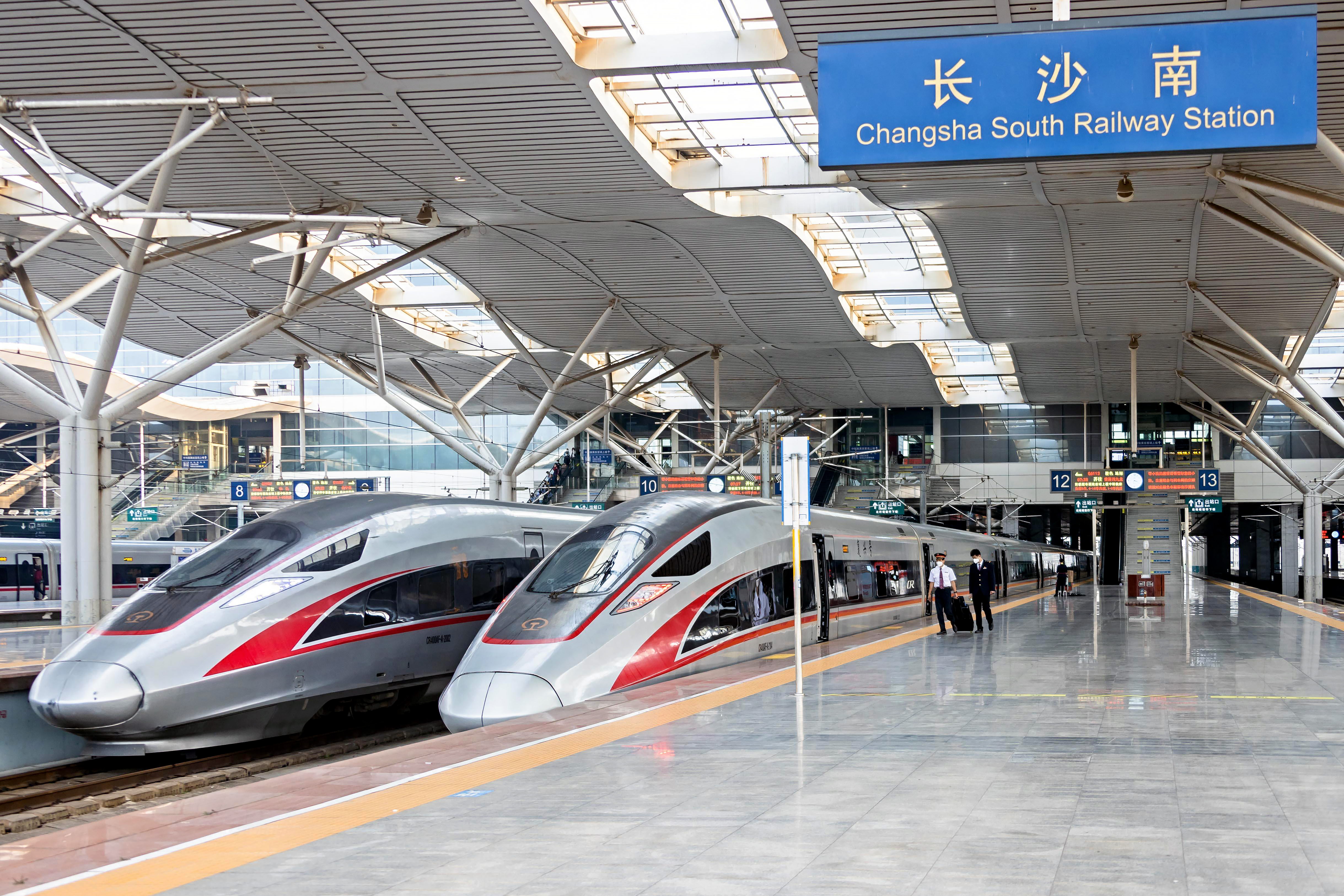
However, Chinese people had to wait more than 20 years for the first Chinese high-speed rail (HSR). In 2003, the launch of the passenger line connecting Qinhuangdao and Shenyang at a speed of 250 km/h marked the beginning of the new Chinese railway era.
Detailed planning of the HSR system began in 2004, which resulted in the adoption of the Medium and Long-Term High-Speed Railway Network Plan. This plan proposed to build a 4+4 HSR Grid featuring four vertical corridors: Beijing-Harbin, Beijing-Shanghai, Beijing-Guangzhou and the Southeast coastal passenger line, as well as four horizontal corridors, including railway lines: Qingdao-Tiyuan, Shanghai-Wuhan-Chengdu, Shanghai-Kunming and Xuzhou-Lanzhou.

The envisioned network would total 12,000 km in length. In August 2008, the Beijing Tianjin rail line was opened in time for the Summer Olympics. This line was first capable of accommodating high-speed trains at a top speed of 350 km/h. The 4+4 national HSR grid was largely completed by the end of 2015 as the backbone of China’s HSR network.
In July 2016, a revised version of the plan foresaw the increase to eight vertical and eight horizontal corridors by 2030. By implementing these plans into reality, China reached a length of 40,000 km at the end of 2021, connecting 93 per cent of cities with over half a million inhabitants by the HSR system. According to the so-called Modern Comprehensive Transportation System for the 14th five-year plan issued by the State Council in January 2022, the total operating length shall expand to 165,000 km by 2025, including 50,000 km of HSR lines.

China today accounts for roughly two-thirds of the world’s high-speed rail volume, outstripping both Japan and the EU. Meanwhile, in Europe, only 11 000 km of high-speed rail are currently in use, according to the Worldwide Railway Organization. And the USA barely even has one line.
The rapid evolution of HSR has reshaped the transportation market in China. As a competitive alternative, HSR has received a positive response from Chinese citizens as a model of travel. Before the COVID pandemic outbreak, HSR assent numbers soared by nearly 2.3 billion in 2019.
You can get from Beijing to Shanghai – 1300 km – in just 4 hours. You can go from north to south, from Beijing to Guangzhou, in 8 hours – instead of 22 on a regular train.
Air passenger traffic has declined due to HSR development, with a particular effect on short-haul flights. The substitution effect of HSR introduction is stronger for the distance range between 500-800 km, but flights over 800 km are also affected by modal shifts. However, air traffic is still dominating the long-haul passenger transportation segment. Interestingly, once all cities with over 500,000 inhabitants are connected to HSR, almost all airports in China will be covered by the HSR network. Based on statistics, HSR trips could replace about 1,1 billion flights, respectively, equalling an overall substitution rate of 26,2
per cent of total flights. It is estimated that energy conserved by HSR annually is 2089 million tons of jet fuel and 6311 million tons of direct carbon emissions.
What makes HSR accessible to many people in the population? The fare price. The HSR fares in China are around 25 per cent of the average European price for this service. One reason behind this is the cost of building HSR lines in China is significantly lower than in other parts of the world. According to data for a speed of 350 km/h, the average value of construction cost is around 17-21 million €/km in China. In Europe, the average construction cost is about 25-39 million €/km. And in Japan, for Shinkansen lines built in this millennium, the construction costs are about 40 million €/km. Of Course, one reason for the difference in construction costs can be found in cheap labour. Still, one of the primary triggers is undoubtedly the capabilities of the Chinese railway industry, which is easy to organise when it knows what it can expect in the future – unlike its European counterparts.
The author is a foreign policy journalist